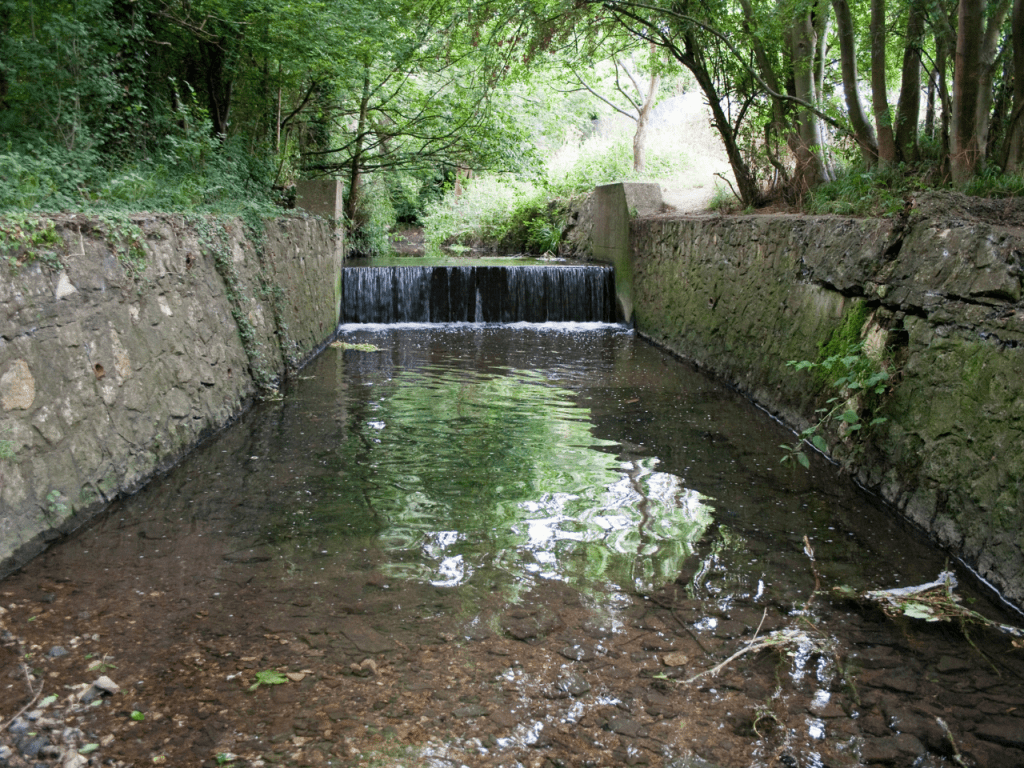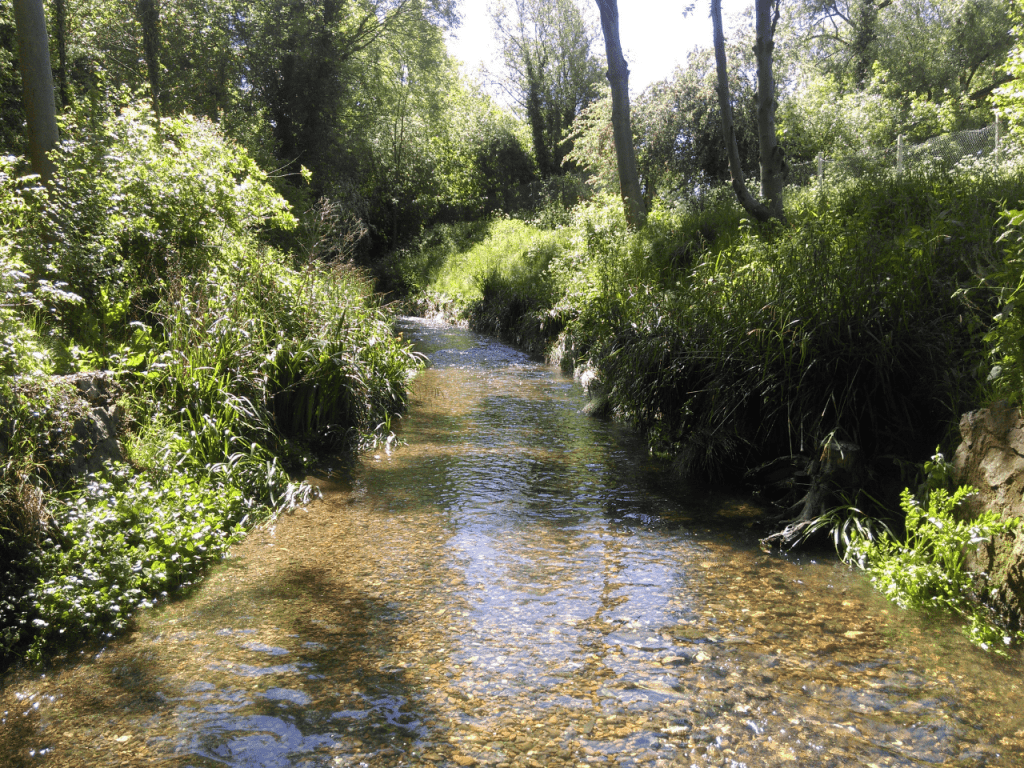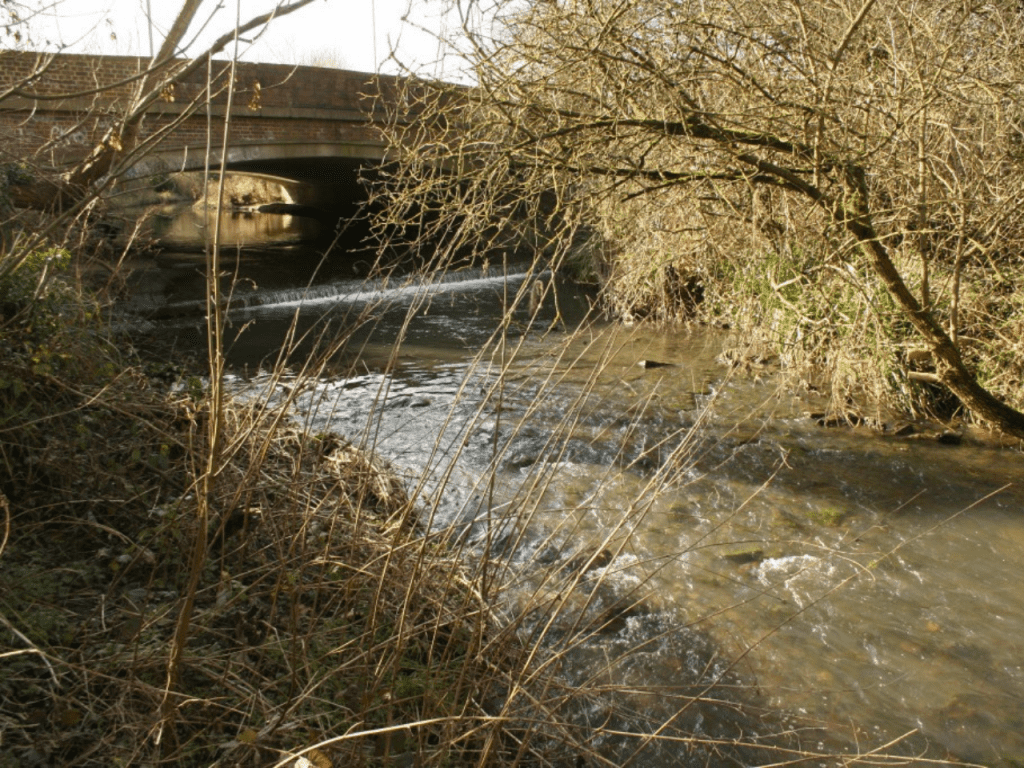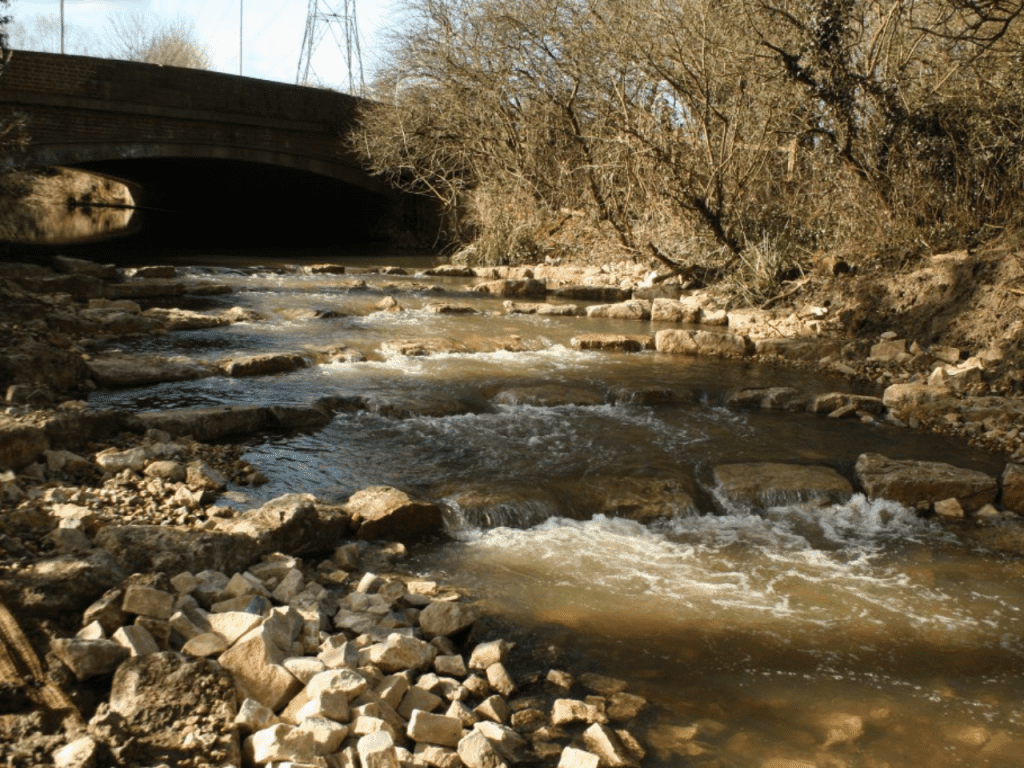Fish swimming the Hogsmill River once had to tackle as many as 19 obstacles along this 11 km chalk stream.
Since 2012, the South East Rivers Trust has addressed 18 of 19 barriers to fish passage on the Hogsmill, making it much more fish-friendly. By the end of the project, all 19 will have been tackled meaning fish will be able to travel from Kingston to Ewell without interruption.




